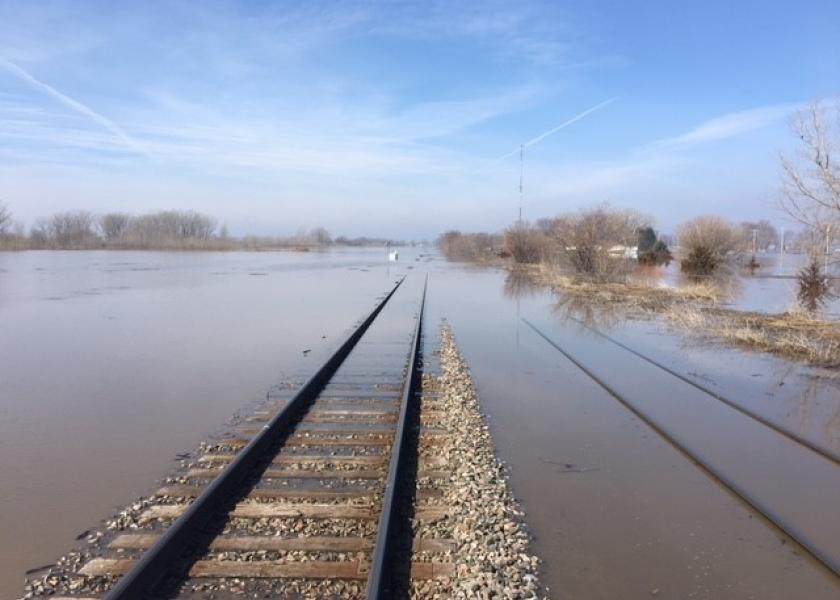Catastrophic Flooding Damages Roads, Rail and Access to Export Market

By now you’ve been reading about flooding damage from Missouri, Elkhorn and Platte Rivers for at least the past week. In this time, roads and rail have been destroyed and river capacity for transport has been negatively impacted.
In fact, Wednesday morning a levee near Craig, Mo., breeched and lead to a mandatory evacuation for the 222 residents. While the total damage is still unknown for flooding across the Midwest, experts advise road and rail repair will take weeks to months after the water recedes.
“I don’t know of a gravel road or rural bridge that has a happy coexistence with flooding conditions,” Mike Steenhoek with the Soy Transportation Coalition told AgriTalk Host Chip Flory. “The ground acts less like a sponge and more like a table top. We’ve had consistent cold throughout the year without periodic melts where you’re able to expect some of that water. It really has wreaked some havoc on local systems.”
Gravel roads are washed out, rural bridge foundations are degraded or even destroyed, and the foundation the rails sit on is getting washed away.
“You’re seeing railroads making these announcement that service is declined because of track damage,” Steenhoek said. “That’s a real concern.”
One such example? BNSF Railway recently shut down portions of its track due to water or washout. Railroads are private sector, so they’re responsible for their own repairs—but you could see the impact in a wider basis.

“BNSF crews are conducting ongoing assessments and inspections regarding the condition of our main lines,” the company said in a news release on March 18. “Additional resources, including ballast (foundation under rails), are being deployed to affected locations to make track repairs as quickly as possible.”

Recently, reports have flowed in concerning rural roads, highways and bridge shut-downs and failures since the start of the major flooding last week. These critical repairs come at a time when infrastructure dollars are already stretched.
“For local governments it’s a tax base that numerically has declined over the years because there are fewer people living in rural America,” Steenhoek said. “And yet, they still can easily have 1,000s of miles of roads in one county and a significant volume of that is gravel roads that need to be resurfaced. That’s going to tax and exhaust a lot of the local and county government funding sources.”
Rushing water is impacting farmers’ access to export markets. With more water, comes more sediment. The Mississippi river is already reduced from 45’ of clearance to 41’ and that reduces load sizes available to export customers.
“This lower river accounts for 60% of U.S. soybean exports and 59% of corn exports,” Steenhoek explains. “Every 1’ of reduced depth that you have you’re now unable to load that ship 75,000 bu. of soybeans. So, 4’ of depth reduces [capacity] by 300,000 bu. on the vessel.”
This could widen basis and considering already tight margins, provide very real consequences to farmers—even those not in the floodplain.
More on flooding:
Flood damage: Here’s what you need to know
Flooding reaches record levels in 17 locations in Nebraska
Markets overlook flooding’s estimated near-$1 billion in losses







